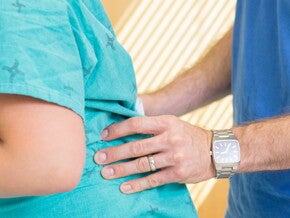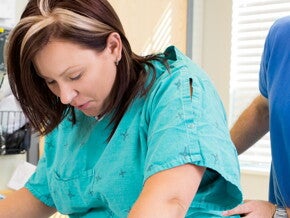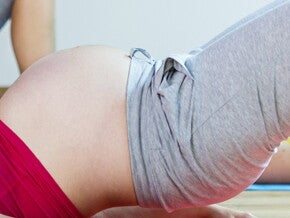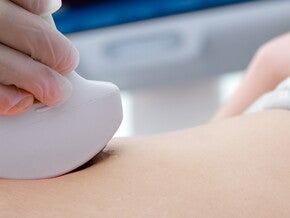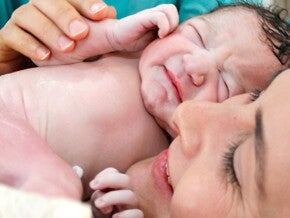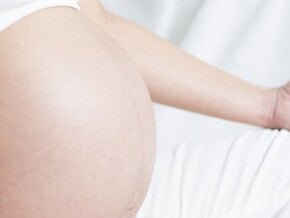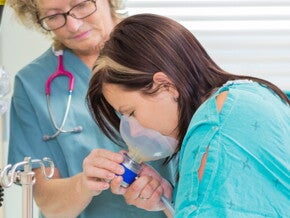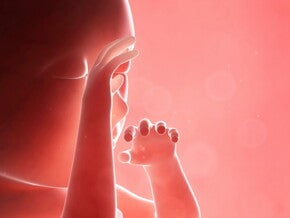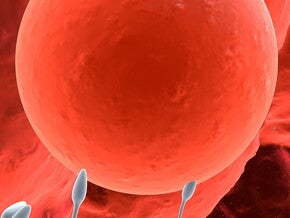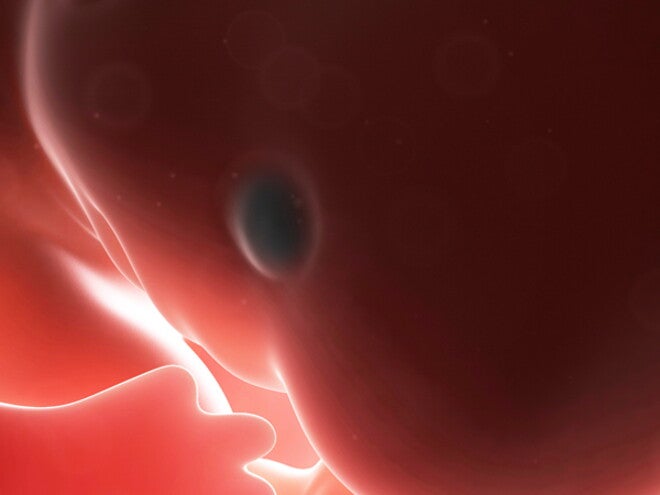
Sex in pregnancy
- You may find you lose interest in sex at this stage due to nausea and fatigue.
- Men often fear they may harm the baby.
- Stroking, caressing and massage are pleasurable ways of expressing love.
Condoms
If you are worried that you or your partner may have HIV or another sexually transmitted disease, it is vitally important to use condoms during pregnancy to avoid infecting each other.
Baby
The first trimester, or first three months, is also known as the developmental stage. By the end of this period, the baby and its organs are fully formed and functioning, and for you it is a time of physical and emotional adjustment.
A Life Begins
Week 1-2: After fertilisation, a single cell continues to divide until a cluster of cells develop, known as the morula. This forming cluster is propelled along the fallopian tube towards the uterus. By the time the morula arrives in the uterus, four days after conception, a hollow centre has formed known as the blastocyst.
Week 3: The morula loses its membrane and implants itself into the uterine lining. An inner and outer portion are now evident. The outer portion burrows its finger-like projections, villi, into the blood vessels in the uterine lining. The villi later become the placenta from which the foetus will obtain nourishment for its development. The inner portion of the morula will form the baby.
Weeks 5–14: By the end of the fifth week the embryo is two millimetres long, with a primitive nervous system. The heart starts to beat by the 25th day. A head with ears and mouth forms. Simple kidneys, liver, digestive tract and the beginnings of the umbilical cord are evident. On the 26th day arm buds will appear and two days later leg buds.
Week 7: The developing baby’s genitals begin to form.
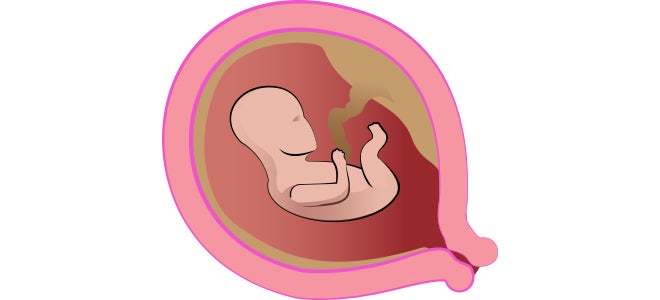
Week 8: The embryo is complete. The face has eyes, a nose, ears and a mouth with lips, a tongue and tooth buds in the gums. The arms have hands with fingers and fingerprints and the legs have knees, ankles and toes. The embryo grows about one millimetre a day. The bones begin to harden and the developing baby is now known as a foetus.
Week 12: Your baby has a spinal cord, a heart with four chambers, vocal cords, taste buds, is about 6,5 cm long and weighs about 18 g.
Mother
You have missed a menstrual period. During the early stages of pregnancy you may feel tired and need more sleep, because of new demands on your body. You may also experience nausea and vomiting and, although referred to as morning sickness, this can occur at any time of the day.
Breasts
Changes you notice in your breasts, such as swelling, tenderness, enlargement, pronounced veins and even a tingling sensation in your nipples, are the result of the increased levels of oestrogen and progesterone. The area around each nipple enlarges and becomes darker. Little bumps called Montgomery glands become more prominent in this area and enlarge to produce more lubrication for the areola.
Bladder
The pressure of the enlarging uterus on your bladder may increase your need to urinate frequently.
Vagina
Early in pregnancy the vaginal tissues change to enable the vagina to stretch more easily during birth. The blood supply to this region increases, as well as the secretions from the mucous membranes, resulting in increased vaginal discharge.
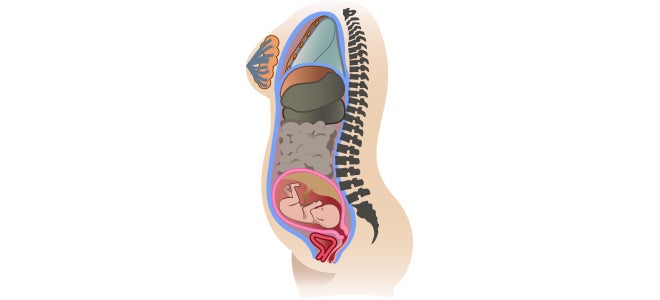
| Gestation | Visits, tests, observations | Performed by |
| 6–8 weeks | First visit – the first visit to your doctor will involve a thorough history-taking and clinical examination to establish your current and past health status, as well as estimating the due date for your baby.You will also have a vaginal ultrasound to establish how far your pregnancy is and to see the little foetal sac and beating foetal heart. It is advisable for all women planning a pregnancy to have their annual pap smear. If your pap smear is overdue, it will be performed during this visit.Routine observations that will be performed at each subsequent visit include: Urine testing – to check for sugar, or signs of infection and protein.Blood pressure – the reading taken during the first visit will establish a blood pressure baseline, as 1–2% of pregnant women develop raised blood pressure. If this is associated with headaches, blurred vision and protein in the urine, it may indicate the presence of Pregnancy Induced Hypertension (pre-eclampsia) and require close medical observation. Weight – your initial weight will be recorded to establish a baseline and ensure adequate weight gain throughout the pregnancy, on average between 11–15 kg.General observation – this will include a general assessment to establish the wellbeing of the mother during pregnancy, observe the extremities for signs of swelling, the presence of varicose veins, etc.Abdominal palpation – to assess the size of the uterus and later the position of the baby in the uterus. This will only be done after 12 weeks.Blood tests – these will be done to establish your blood group, immunity to Rubella and whether or not you are anaemic and have been exposed to any sexually transmitted diseases, including HIV.Ultrasound – may be performed now to confirm the presence of the gestational sac.Chorionic Villus Sampling – if indicated, it will only be done after your 12-week visit. VISITS TO YOUR CAREGIVER WILL BE MONTHLY UNTIL 28 WEEKS GESTATION. |
Obstetrician G.P.
All caregivers
Obstetrician
Obstetrician
Obstetrician
|
| 12 weeks | Routine observation Ultrasound – to observe the foetal heart and measure the nuchal fold at the back of the baby’s neck. The nuchal fold, along with important blood tests, will establish your risk of having a baby with Down’s Syndrome. |
All caregivers Obstetrician |
Tips for expectant moms
- Avoid harmful substances.
- Eat nutritious food.
- Start an exercise programme.
- Notify your place of work and make plans
for maternity leave.



